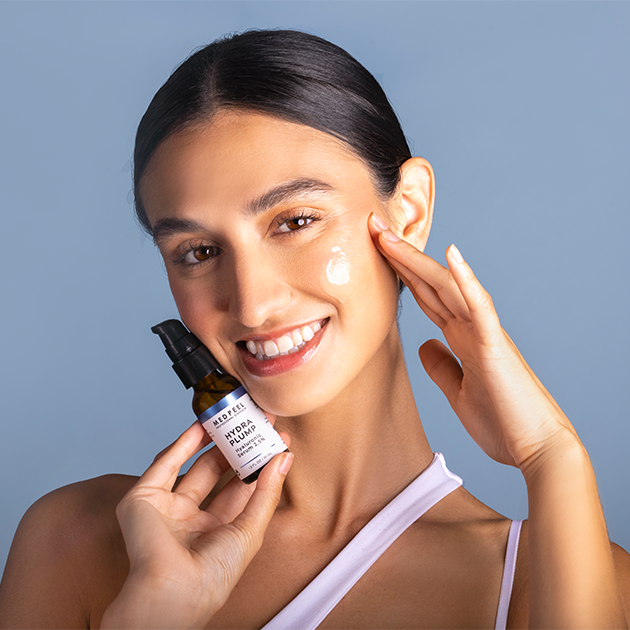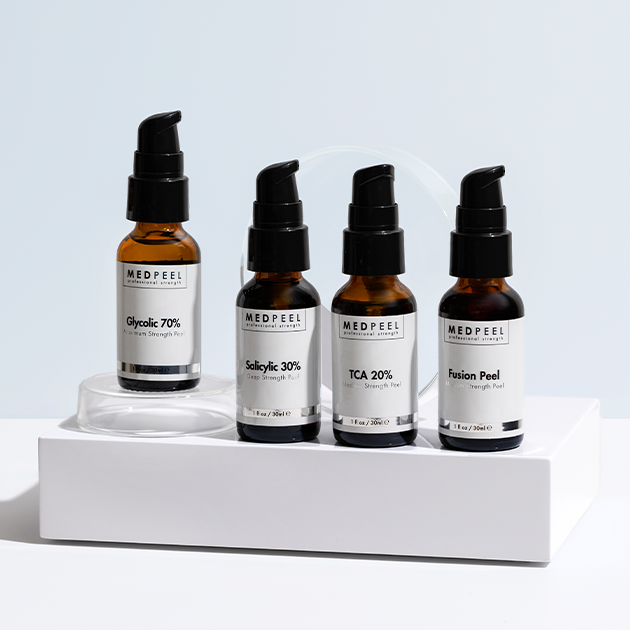What is Hyperpigmentation?
Hyperpigmentation refers to the darkening of an area of skin caused by an excess production of melanin, the pigment that gives skin its color. It can appear as small spots or large patches and can be caused by a variety of factors, such as sun exposure, hormonal changes, acne, and skin injuries.
The most common forms of hyperpigmentation include:
Age spots/Sun spots
Sun spots, also known as solar lentigines or age spots, are flat, tan, brown, or black spots that appear on areas of the skin exposed to the sun. They are most commonly found on the face, hands, shoulders, and arms.
Sun spots are caused by prolonged exposure to ultraviolet (UV) radiation from the sun. Over time, this exposure leads to the accumulation of melanin, the pigment responsible for skin color, in certain areas of the skin. Sun spots are more common in individuals with fair skin, as they have less melanin to protect against UV damage.
Post-Inflammatory Hyperpigmentation (PIH)
Post-inflammatory hyperpigmentation (PIH) is a common skin condition that occurs as a result of an injury or inflammation to the skin, such as acne, eczema, psoriasis, or a cut or burn. PIH causes darkening of the skin in the affected area and can be a temporary or long-lasting condition.
When the skin experiences inflammation or injury, it produces excess melanin in response, which can lead to darkening or discoloration of the skin. PIH can occur in people of any skin color but is more common in individuals with darker skin tones. It can be a distressing condition, as the discoloration can be noticeable and impact a person's self-esteem.
Melasma
Melasma is a common skin condition characterized by the development of brown or gray-brown patches on the face, particularly on the cheeks, forehead, nose, and upper lip. It is more common in women than in men, and often occurs during pregnancy, hence it's also known as "pregnancy mask". However, it can also occur in men and women who are not pregnant.
Melasma is caused by an overproduction of melanin. While the exact cause of melasma is not fully understood, it is believed to be triggered by a combination of factors, including hormonal changes, sun exposure, and genetics.
Treating & Preventing Hyperpigmentation
Treating and preventing hyperpigmentation involves a combination of skincare practices, lifestyle modifications, and professional treatments. Here are some strategies to consider:
Sun Protection
Protecting your skin from the sun is crucial in preventing and minimizing hyperpigmentation. Use a broad-spectrum sunscreen with an SPF of 30 or higher, even on cloudy days. Reapply every two hours and wear protective clothing, hats, and sunglasses when exposed to the sun.
Gentle cleansing
Use a mild cleanser to cleanse your face twice a day. Avoid harsh scrubbing or abrasive products that can irritate the skin and potentially worsen hyperpigmentation. Our Skin Balancing Cleansing Gel is gentle enough for everyday use and washes away impurities without stripping the skin.
Exfoliation
Regular exfoliation can help remove dead skin cells and promote skin cell turnover. Choose gentle exfoliants such as alpha hydroxy acids (AHAs) or beta hydroxy acids (BHAs). Avoid over-exfoliating, as it can cause skin irritation. A physical exfoliator, like our AHA/PHA Resurfacing Scrub provides a gentle polish to the skin and our *Daily Exfoliators* contain mild AHA and BHA acids that penetrate deep into the skin to dissolve and loosen dead skin cells.
Topical treatments
Several topical treatments can help lighten hyperpigmentation. Look for ingredients such as vitamin C, retinol and niacinamide. These ingredients can help reduce the production of melanin and fade dark spots over time. You can find them in various Medpeel products such as: Hydra-Plump Hyaluronic Serum 2.5%, Vitamin C30X Retinol Serum, Brightening AHA 10% Vitamin C Daily Exfoliator, Youth Restore Firming Ceramide Cream
Chemical peels
In severe cases or for faster results, professional treatments such as chemical peels may be recommended. Our Hyperpigmentation Rescue bundle contains everything you need to perform an at-home chemical peel treatment, specifically curated to address multiple types of hyperpigmentation concerns.
Lifestyle modifications
Certain lifestyle factors can exacerbate hyperpigmentation. Avoid picking or scratching at your skin, as it can lead to post-inflammatory hyperpigmentation. Maintain a healthy lifestyle with a balanced diet, adequate hydration, and enough sleep to support overall skin health.




